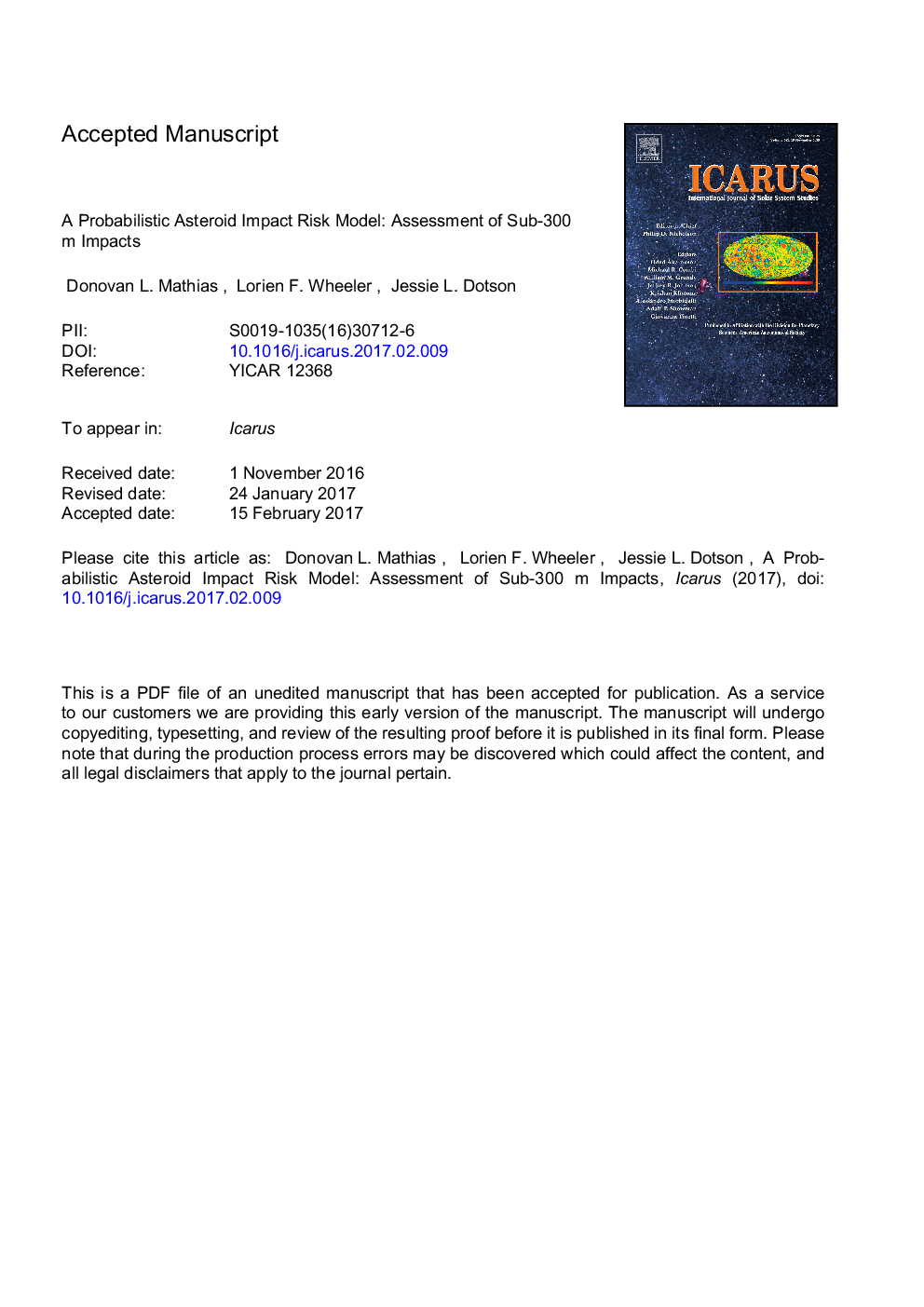| Article ID | Journal | Published Year | Pages | File Type |
|---|---|---|---|---|
| 5487282 | Icarus | 2017 | 30 Pages |
Abstract
A comprehensive asteroid threat assessment requires the quantification of both the impact likelihood and resulting consequence across the range of possible events. This paper presents a probabilistic asteroid impact risk (PAIR) assessment model developed for this purpose. The model incorporates published impact frequency rates with state-of-the-art consequence assessment tools, applied within a Monte Carlo framework that generates sets of impact scenarios from uncertain input parameter distributions. Explicit treatment of atmospheric entry is included to produce energy deposition rates that account for the effects of thermal ablation and object fragmentation. These energy deposition rates are used to model the resulting ground damage, and affected populations are computed for the sampled impact locations. The results for each scenario are aggregated into a distribution of potential outcomes that reflect the range of uncertain impact parameters, population densities, and strike probabilities. As an illustration of the utility of the PAIR model, the results are used to address the question of what minimum size asteroid constitutes a threat to the population. To answer this question, complete distributions of results are combined with a hypothetical risk tolerance posture to provide the minimum size, given sets of initial assumptions for objects up to 300Â m in diameter. Model outputs demonstrate how such questions can be answered and provide a means for interpreting the effect that input assumptions and uncertainty can have on final risk-based decisions. Model results can be used to prioritize investments to gain knowledge in critical areas or, conversely, to identify areas where additional data have little effect on the metrics of interest.
Related Topics
Physical Sciences and Engineering
Earth and Planetary Sciences
Space and Planetary Science
Authors
Donovan L. Mathias, Lorien F. Wheeler, Jessie L. Dotson,
